In the Oder Delta, which is shared between Germany and Poland, many rivers have been negatively impacted by human intervention. Recent river restoration work carried out by the local rewilding team and partners on the Polish side is reinvigorating two tributaries of the Ina River, with benefits for nature and people.
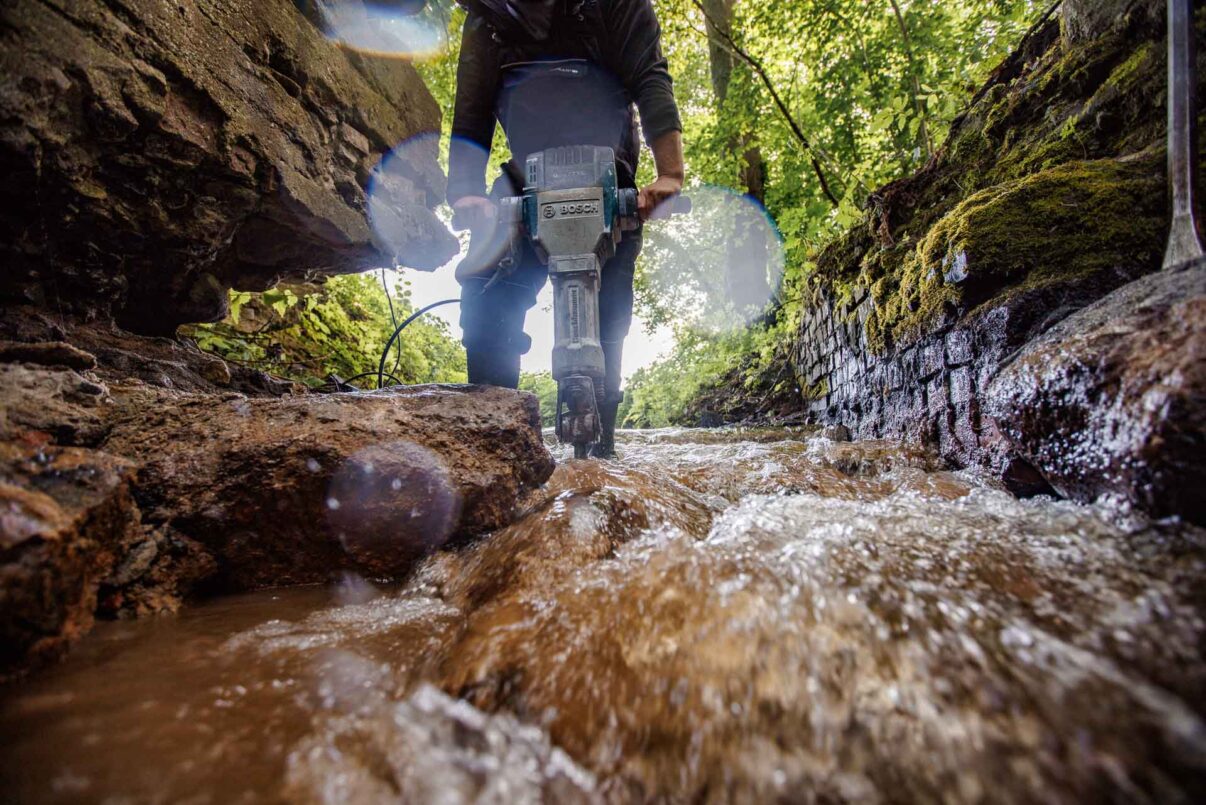
Towards free-flowing rivers
The revival of natural processes lies at the heart of rewilding, as it helps to create ecosystems that function as they should. Rewilding rivers means giving them the space and freedom to manage themselves, with dynamic, natural processes such as the free flow of water and flooding returning them to health. The removal of dams and other barriers has already proven to be one of the most efficient and cost-effective ways of restoring rivers, delivering wide-ranging benefits to both nature and people in a relatively short space of time.
In the Polish part of the cross-border Oder Delta rewilding landscape, restoration efforts carried out in June and July are already breathing new life into stretches of two waterways in the Ina River catchment. The removal of two weirs by the Rewilding Oder Delta team and partners – complemented by efforts to recreate more natural riverbed conditions – will enhance fish migration and reproduction along 20 kilometres of waterway. Local communities, foresters, and farmers will also benefit from the healthier rivers.
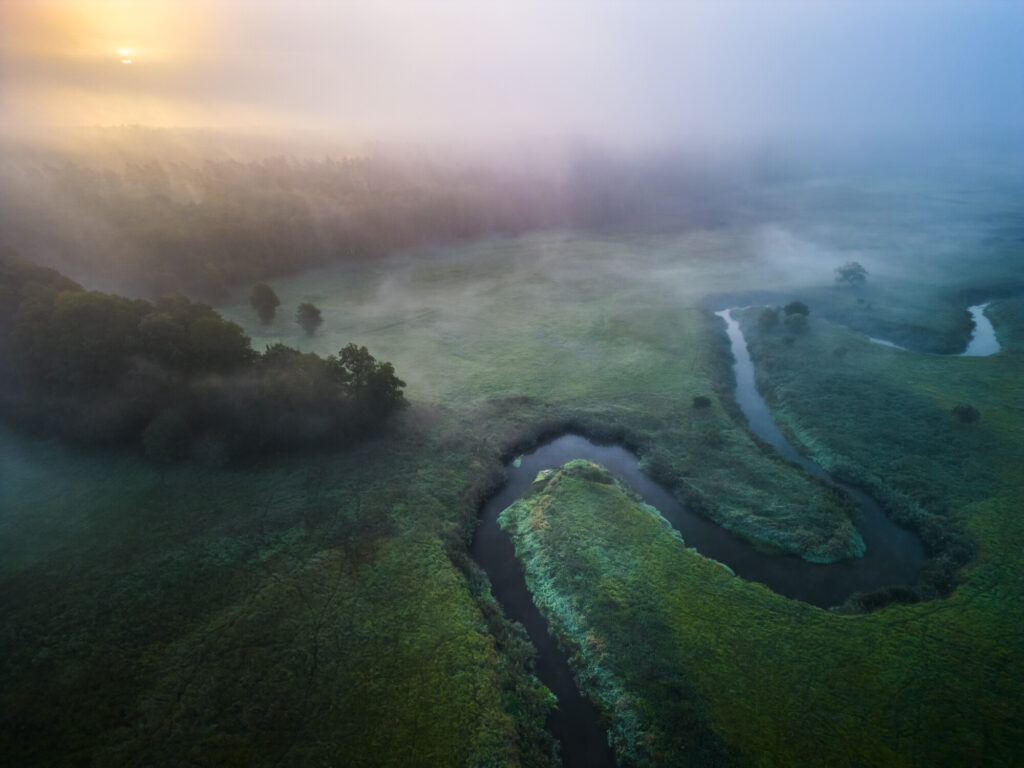
Breaking barriers
The Wisełka and Biała Struga are two small streams that flow into the Ina River, which itself is an important tributary of the Oder. In collaboration with the Society of the Friends of the River Ina and Gowienica (TPRIiG), the Rewilding Oder Delta team restored stretches of the first stream near the village of Bącznik, and the second near the village of Zabrodzie, with fieldwork continuing for over a month.
The restoration work on the Wisełka involved the partial removal of a weir, which was originally installed as part of a former water mill. This had been preventing fish from moving up and downstream for decades.
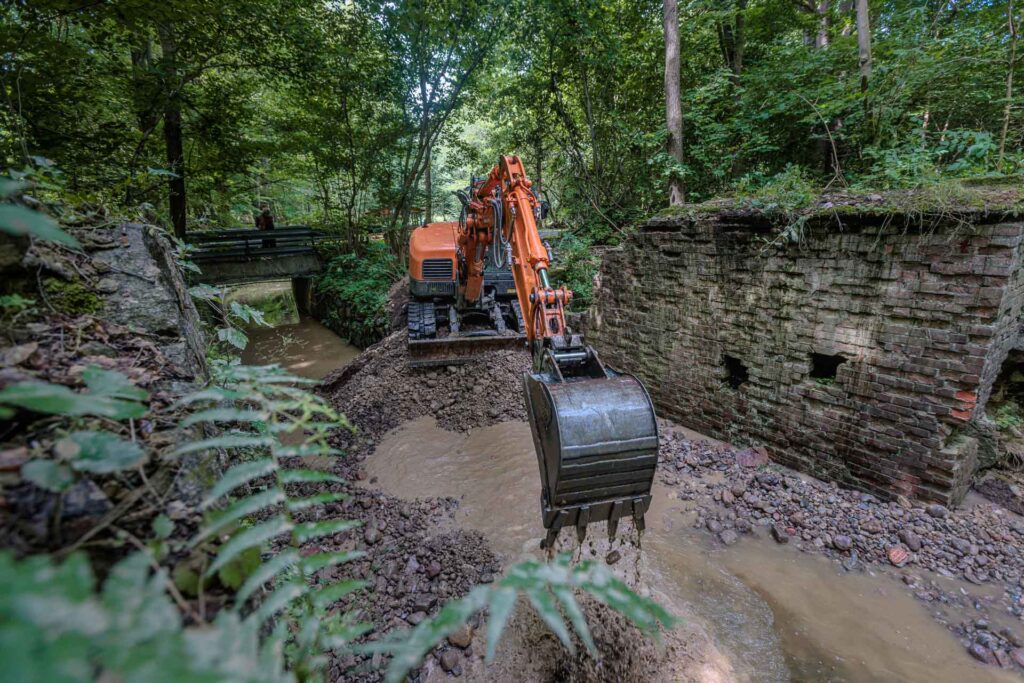
Three wide gravel and stone piles (or “prisms”) were also constructed on the riverbed; the first prism – located in the ruins of the mill – helped to reduce the height difference between the riverbed on either side of the removed weir, enabling fish to migrate more easily.
On the Biała Struga, restoration work consisted of raising the riverbed and slowing the flow of water. The latter was achieved by building a sequence of two prisms. These prisms, which were specially designed by the Komes Water hydrotechnical design office, reduced the difference between water levels below an obsolete weir, which was also removed.
Immediate impact
The beneficial impact of the river restoration work was visible almost immediately. Only a day after the prisms were created, stream and river lampreys could be seen navigating the water above them. A wide range of other aquatic species feed and breed on the gravel bottoms of rivers, so the return of many other animals is possible. On a larger scale, nature-rich river valleys also tend to attract predatory mammals, such as otters, foxes, and wolves.
“In addition to fish from the salmon family, we can expect the restored sections of river to attract birds such as the white-tailed eagle, kingfisher, and grey wagtail,” says ornithologist Maciej Sobieraj, from the Foundation for Climate and Biodiversity.
“The removal of barriers and the restoration of the riverbed have improved conditions for the reproduction and migration of many fish species, including sea trout,” adds hydrobiologist Artur Furdyna, who coordinated the restoration work on behalf of Rewilding Oder Delta. “We are also expecting the return of indicator plant species, such as water buttercup.”
Video showing life returning to the Wiselka after restoration work.
Clean water benefits people
As well as enabling the return of valuable plant and animal species, the addition of gravel and stone piles in the Wisełka and Biała Struga will also benefit people. By slowing the current, and boosting the capacity of the rivers to clean themselves, the prisms will increase both the quantity and quality of water in this part of the catchment. This will not only enhance natural conditions in each waterway, but in surrounding forests and agricultural areas too. The restoration team estimate an extra 3,000 m3 of water will be retained in the rivers, and an extra 4,500 m3 in their valley.
The rewilding of tributaries flowing into the Ina is extremely important – not just in terms of restoring historical spawning grounds, but also to provide a buffer in case of pollution events. Healthy tributaries can provide a refuge for aquatic species, where they can wait out life-threatening conditions that can arise during such events. This was observed during the contamination of the Ina and Oder rivers in previous years.
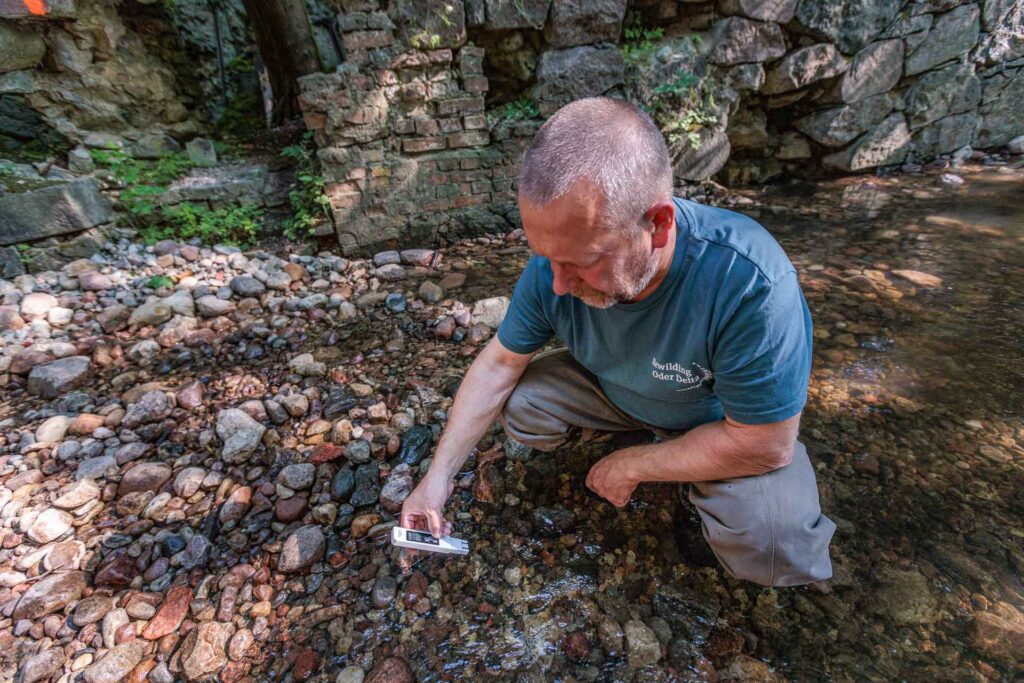
Long-term preparation
Preparations for restoration work on the Biała Wisełka and Biała Struga took two years. During this time, the Rewilding Oder Delta team, with the support of TPRIiG, provided financing, prepared necessary documentation, and selected a contractor.
“We identified ten in-river structures negatively impacting the connectivity of the rivers in the catchment,” says Piotr Piotrowski, who co-authored an analytical study on behalf of TPRIiG. “From these we ultimately selected two for removal. Removing obsolete barriers is a huge opportunity to recreate properly functioning river systems.”
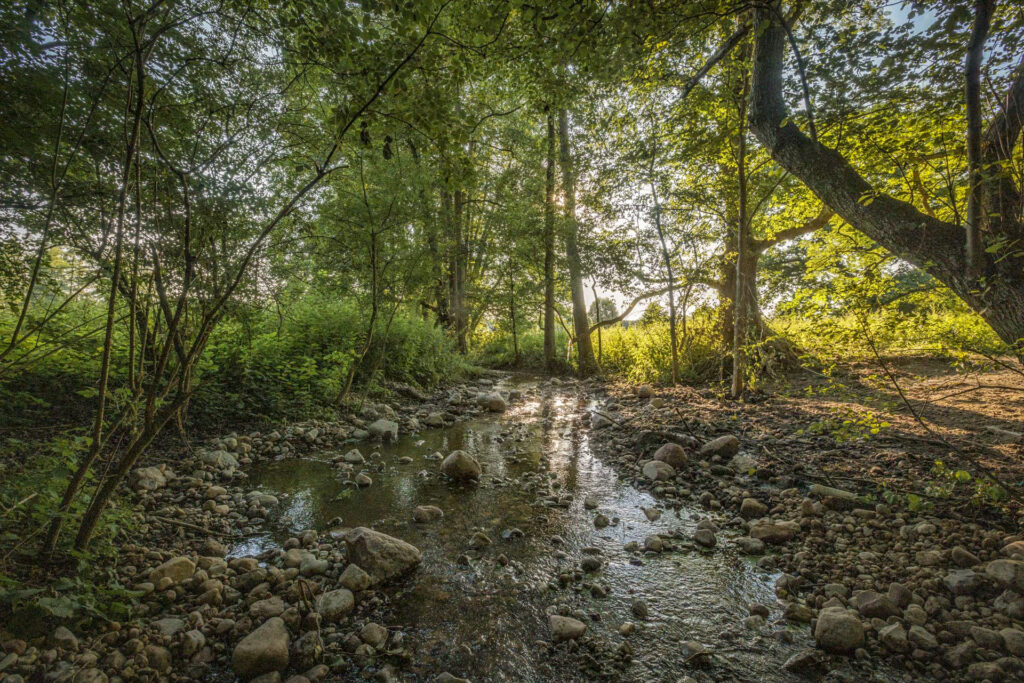
The bigger picture
Man’s desire to govern and harness nature means a huge number of European waterways are choked with dams and other barriers. These have a hugely negative impact on fish, other wildlife, and people. In the Oder Delta rewilding landscape, the free flow of water in countless rivers has been restricted by dams and weirs. In collaboration with local partners, the rewilding team are working to restore waterways across the delta through a range of rewilding measures, including the removal of such barriers.
 In Rewilding Europe’s Danube Delta rewilding landscape, the Rewilding Ukraine team are also engaged in long-term efforts to renaturalise water flow and connectivity, with the removal of dykes and dams and reconnection of channels breathing new life into the delta and its communities. Rewilding Europe’s local landscape teams and their partners are currently preparing to remove dams in Swedish Lapland, the Central Apennines (Italy), the Southern Carpathians (Romania), and the Greater Côa Valley (Portugal). Rewilding Europe is also a member of Dam Removal Europe, a burgeoning, European-wide coalition of organisations working to restore European rivers by removing old and obsolete dams and weirs.
In Rewilding Europe’s Danube Delta rewilding landscape, the Rewilding Ukraine team are also engaged in long-term efforts to renaturalise water flow and connectivity, with the removal of dykes and dams and reconnection of channels breathing new life into the delta and its communities. Rewilding Europe’s local landscape teams and their partners are currently preparing to remove dams in Swedish Lapland, the Central Apennines (Italy), the Southern Carpathians (Romania), and the Greater Côa Valley (Portugal). Rewilding Europe is also a member of Dam Removal Europe, a burgeoning, European-wide coalition of organisations working to restore European rivers by removing old and obsolete dams and weirs.
River restoration efforts on the Wisełka and Biała Struga benefitted from the huge experience of TPRIiG, as were carried out in collaboration with the Kliniska Forest District. They were financed by Rewilding Europe and the Firmenich Foundation.

